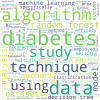An enhanced diabetes prediction amidst COVID-19 using ensemble models
- PMID: 38155892
- PMCID: PMC10754515
- DOI: 10.3389/fpubh.2023.1331517
An enhanced diabetes prediction amidst COVID-19 using ensemble models
Abstract
In the contemporary landscape of healthcare, the early and accurate prediction of diabetes has garnered paramount importance, especially in the wake of the COVID-19 pandemic where individuals with diabetes exhibit increased vulnerability. This research embarked on a mission to enhance diabetes prediction by employing state-of-the-art machine learning techniques. Initial evaluations highlighted the Support Vector Machines (SVM) classifier as a promising candidate with an accuracy of 76.62%. To further optimize predictions, the study delved into advanced feature engineering techniques, generating interaction and polynomial features that unearthed hidden patterns in the data. Subsequent correlation analyses, visualized through heatmaps, revealed significant correlations, especially with attributes like Glucose. By integrating the strengths of Decision Trees, Gradient Boosting, and SVM in an ensemble model, we achieved an accuracy of 93.2%, showcasing the potential of harmonizing diverse algorithms. This research offers a robust blueprint for diabetes prediction, holding profound implications for early diagnosis, personalized treatments, and preventive care in the context of global health challenges and with the goal of increasing life expectancy.
Keywords: COVID-19; classification; correlation analysis; diabetes; ensemble models; feature engineering; interaction; polynomial.
Copyright © 2023 Thakur, Gera, Bhardwaj, AlZubi, Ali and Singh.
Conflict of interest statement
The authors declare that the research was conducted in the absence of any commercial or financial relationships that could be construed as a potential conflict of interest. The author(s) declared that they were an editorial board member of Frontiers, at the time of submission. This had no impact on the peer review process and the final decision.
Figures








References
Publication types
MeSH terms
LinkOut - more resources
Full Text Sources
Medical

